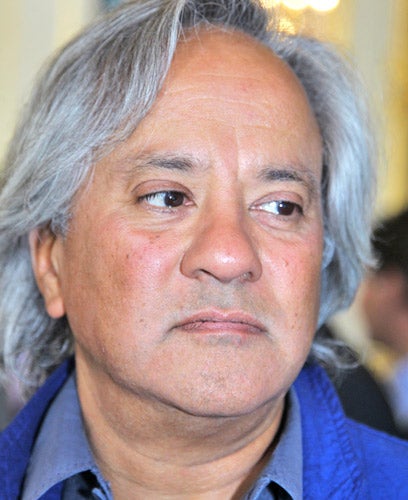How Anish Kapoor's Venice installation went up in smoke
Visitors left confused after artist's critique of the 'immaterial' simply fails to function

Your support helps us to tell the story
From reproductive rights to climate change to Big Tech, The Independent is on the ground when the story is developing. Whether it's investigating the financials of Elon Musk's pro-Trump PAC or producing our latest documentary, 'The A Word', which shines a light on the American women fighting for reproductive rights, we know how important it is to parse out the facts from the messaging.
At such a critical moment in US history, we need reporters on the ground. Your donation allows us to keep sending journalists to speak to both sides of the story.
The Independent is trusted by Americans across the entire political spectrum. And unlike many other quality news outlets, we choose not to lock Americans out of our reporting and analysis with paywalls. We believe quality journalism should be available to everyone, paid for by those who can afford it.
Your support makes all the difference.Anish Kapoor's "Ascension" was to be one of the highlights of this year's Venice Biennale. The work, a whisp of smoke ascending from the floor to a huge extractor fan set in the ceiling of the Basilica di San Giorgio, an ancient church set apart on its own island, emphasises the "immaterial becoming object", according to the artist.
Visitors to the exhibit on its unveiling on Tuesday were bamboozled after a tornado-like column of smoke spluttered, letting out little more than a faint stream of vapour that disintegrated after several metres.
A spokesperson for the artist, said staff on-site were forced to shut the show's doors late yesterday, after the work produced less smoke than is usual. The spokesperson said it was a subtle work "open to misinterpretation".
But broadcast and print art critic Waldemar Januszczak could scarcely hide his disdain. "What should be big, firm and erect is a bit of a flop," he said.
A professional at a major museum, who also saw the work as it produced less smoke, tried to defend the work.
"I think it's very tricky with site-specific commissions," he said. "They need to live and breathe in that space, and openings don't always replicate how a piece is going to look throughout an entire exhibition. At the beginning, you have 300 people coming through the door; later on, you may have 30. I am sure during the rest of the Biennale it will be awe-inspiring.
A confused visitor said: "They wouldn't let people in, and then they did, and it didn't work".
The Biennale's website calls the work a "clear example of that branch of contemporary art research which does not want just to surprise, but that wants to offer the start for reflections on actual and delicate issues."
"In my work, what is and what seems to be often become blurred," said Kapoor. "In Ascension, for example, what interests me is the idea of immateriality becoming an object, which is exactly what happens in Ascension: the smoke becomes a column. Also present in this work is the idea of Moses following a column of smoke, a column of light, in the desert."
Designed by Andrea Palladio from 1565 onwards, and completed by his pupil Vincenzo Scamozzi in the first decade of the 1600s, it is the first time the Basilica has been used to house a contemporary art work. Ascension was first displayed in Italy's San Gimignano gallery in 2003.
Venice Diary
* This year's Irish pavilion was beset by controversy before the Biennale had even started. The Irish chose Emily-Jane Kirwan, a director at New York's Pace Gallery, as the commissioner for its national space. Eyebrows were therefore raised when Kirwan chose sculptural artist Corban Walker to create three new site-specific installations for the Irish space. Which gallery represents Walker? New York's Pace Gallery.
* Award for the best office-block-sized yacht goes to Roman Abramovich, whose colossal boat Luna occupies a prime position outside the city's Giardini. At a measly 115-metres long, the boat contains two swimming pools and a master cabin where Abramovich and his girlfriend Daria Zhukova can sleep beneath the stars.
* Glasgow-based sculptor Karla Black pulled no punches when it came to unveiling her work. "This shows to young artists in Scotland that yes, one day you could also show your work here, you do not have to go to London to make your work," she said.
Join our commenting forum
Join thought-provoking conversations, follow other Independent readers and see their replies
Comments